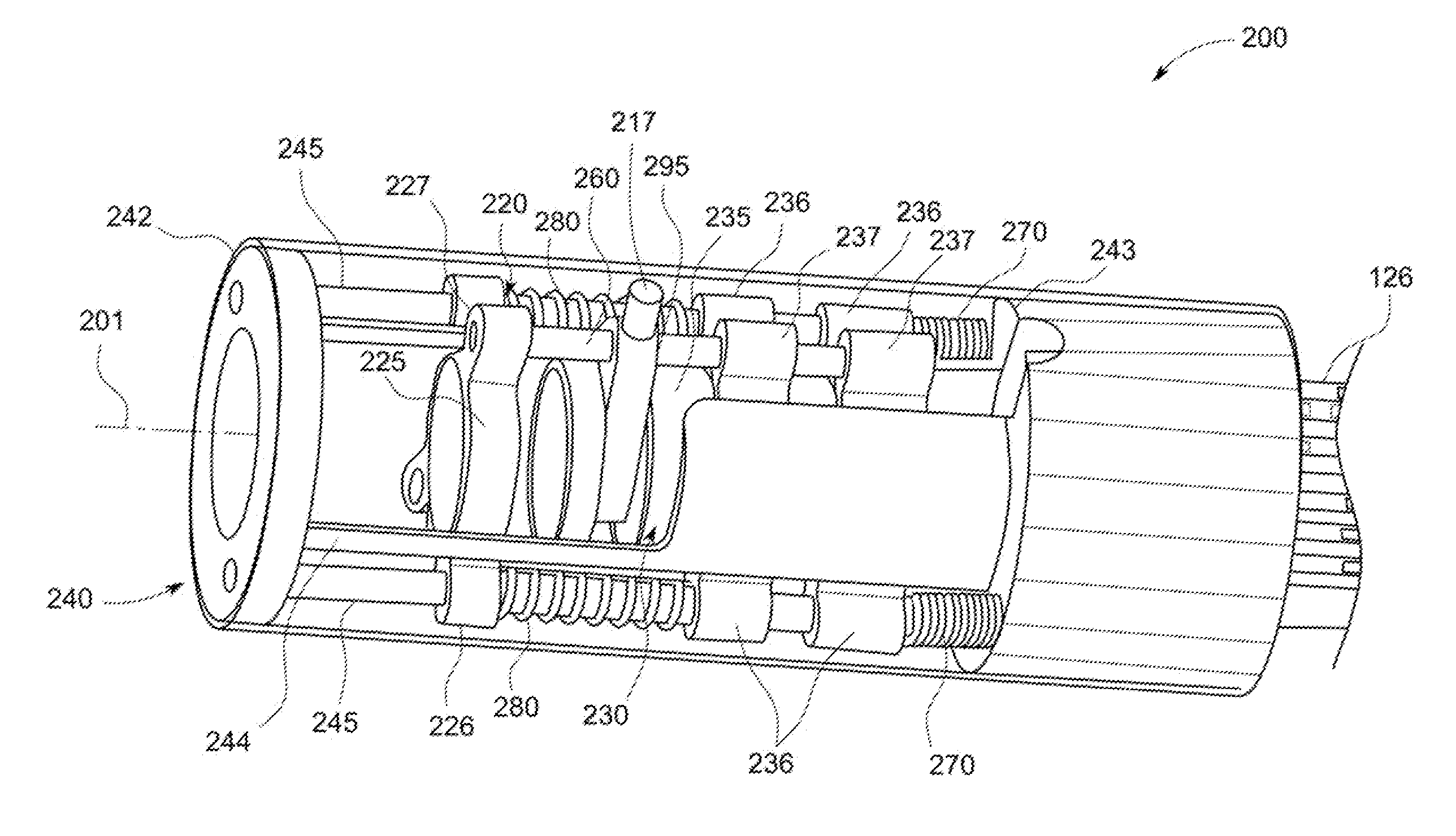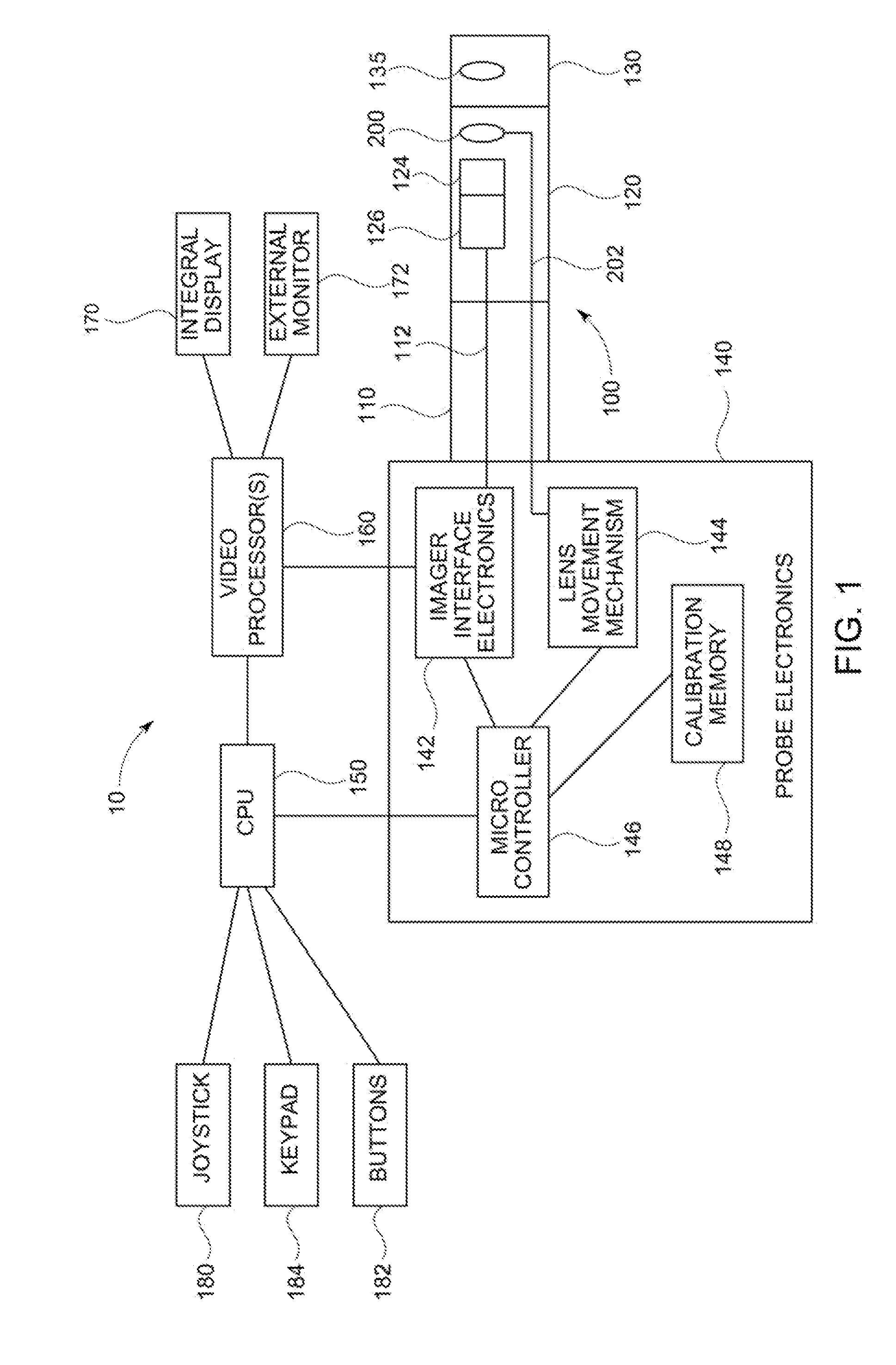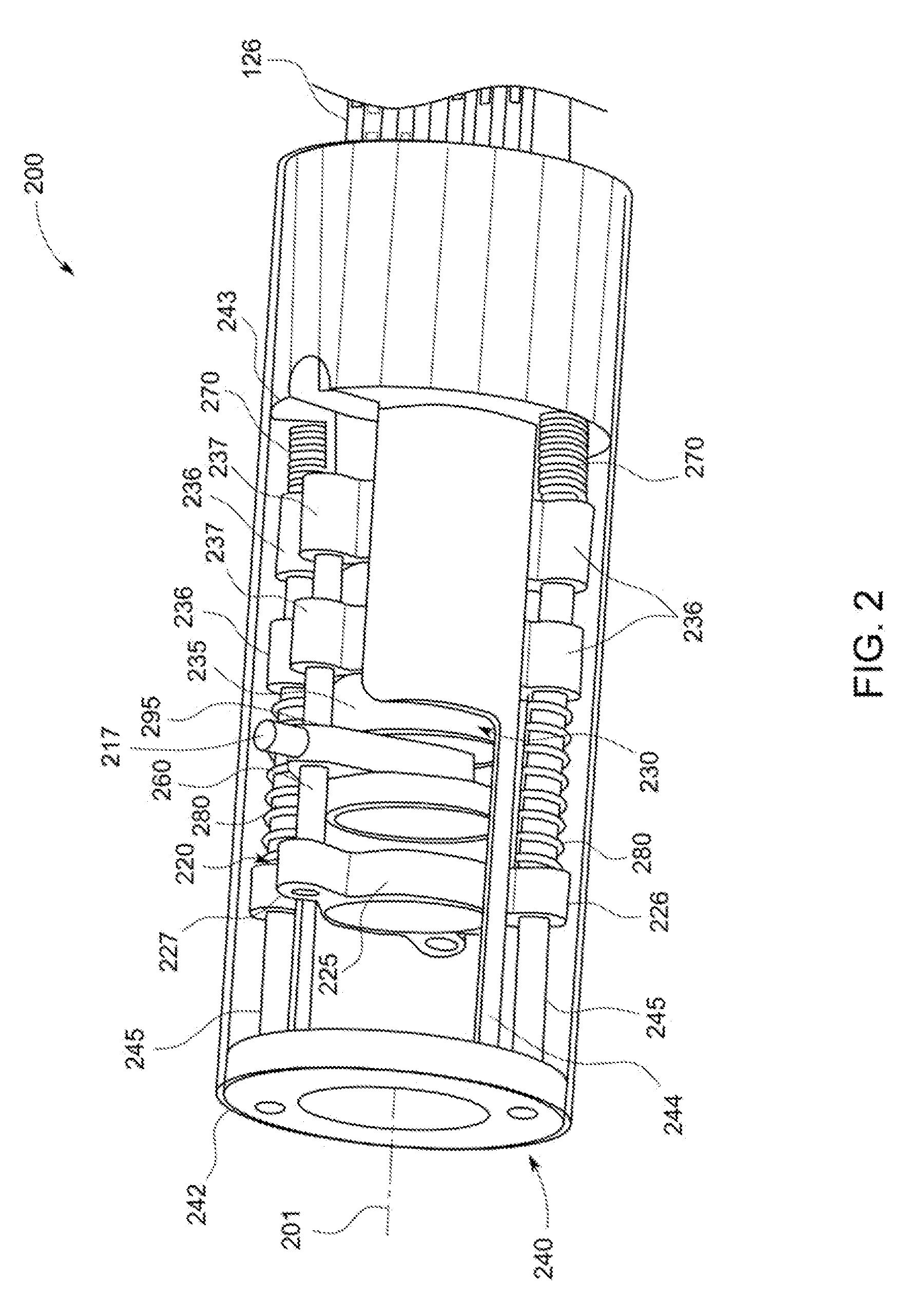System for providing two position zoom-focus
a technology of optical system and two-position zoom, which is applied in the field of video inspection, can solve the problems of inspector's inability to relocate the specific site of interest, difficulty in maintaining sufficient image brightness, and each tip providing a discrete field of view and focus distance chang
- Summary
- Abstract
- Description
- Claims
- Application Information
AI Technical Summary
Benefits of technology
Problems solved by technology
Method used
Image
Examples
Embodiment Construction
[0015]FIG. 1 illustrates an exemplar video inspection device 10 in one embodiment of the invention. Video inspection device 10 can include an elongated probe 100 comprising an insertion tube 110 and a head assembly 120 disposed at the distal end of the insertion tube 110. Insertion tube 110 can be a flexible, tubular section through which all interconnects between the head assembly 120 and probe electronics 140 are passed. Head assembly 120 can include zoom-focus module 200 for guiding and focusing light from the target object onto an imager 124. The imager 124 can be a solid state CCD or CMOS image sensor for obtaining an image of the target object.
[0016]A tip 130 can be placed on the distal end of the head assembly 120. The tip 130 can include tip viewing optics 135 (e.g., lenses, windows, or apertures) that work in conjunction with the zoom-focus module 200 to guide and focus light from the target object onto an imager 124. The tip 130 can also include illumination LEDs (not show...
PUM
 Login to View More
Login to View More Abstract
Description
Claims
Application Information
 Login to View More
Login to View More - R&D
- Intellectual Property
- Life Sciences
- Materials
- Tech Scout
- Unparalleled Data Quality
- Higher Quality Content
- 60% Fewer Hallucinations
Browse by: Latest US Patents, China's latest patents, Technical Efficacy Thesaurus, Application Domain, Technology Topic, Popular Technical Reports.
© 2025 PatSnap. All rights reserved.Legal|Privacy policy|Modern Slavery Act Transparency Statement|Sitemap|About US| Contact US: help@patsnap.com



